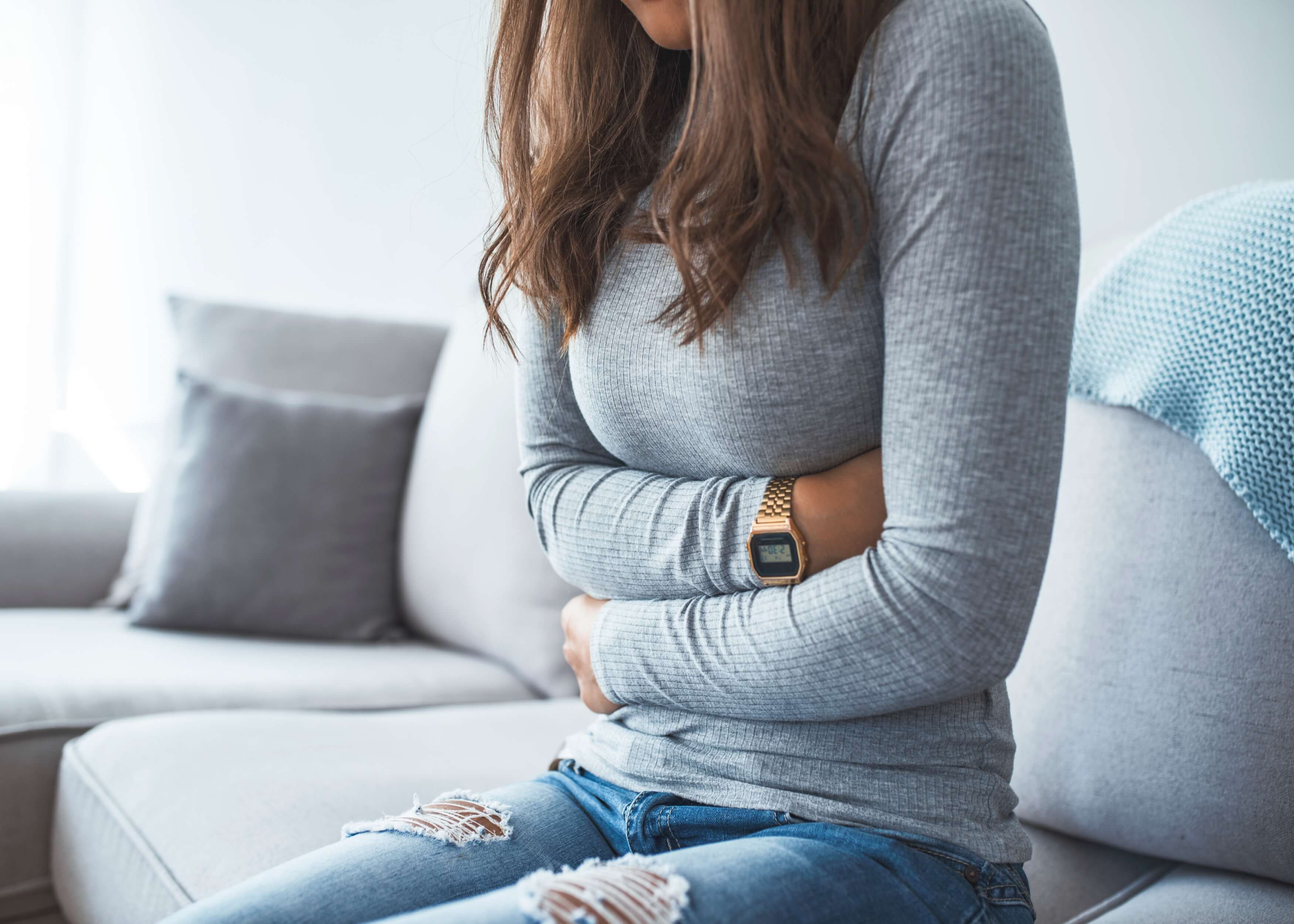DOCTOR INFORMATION
Endometriosis: Doctor Info
Endometrisosis is a condition caused by endometrial-like tissue outside of the uterus, causing pelvic pain😖. In this article we will explain what endometriosis is, the causes, risk factors, symptoms, diagnosis and treatment. You will find a useful summary section within each section of this article to help you identify the key information❗
What is endometriosis❓
 Every month, if pregnancy does not occur, the endometrium (the inner lining of the uterus) detaches and exits the body via the vaginal canal 🤰
Every month, if pregnancy does not occur, the endometrium (the inner lining of the uterus) detaches and exits the body via the vaginal canal 🤰
 Endometriosis is a chronic and often debilitating condition where endometrial-like tissue is found outside of the uterus
Endometriosis is a chronic and often debilitating condition where endometrial-like tissue is found outside of the uterus
 For example, the tissue may be found on the ovaries or the uterine tube
For example, the tissue may be found on the ovaries or the uterine tube
 Because the tissue is similar to that of those in the womb, it has a similar reaction to the hormonal changes in the person’s body
Because the tissue is similar to that of those in the womb, it has a similar reaction to the hormonal changes in the person’s body
 The cells have a similar reaction to the tissue making up the lining of the womb, causing them to break down and bleed each month 📅
The cells have a similar reaction to the tissue making up the lining of the womb, causing them to break down and bleed each month 📅
 However, unlike the tissue in the womb, there is no opening for the blood to leave the body ❌
However, unlike the tissue in the womb, there is no opening for the blood to leave the body ❌
 This can cause inflammation, pain and scar tissue
This can cause inflammation, pain and scar tissue
Different types of endometriosis:
- Peritoneal superficial endometriosis: lesions or spots of inflammation on the superficial tissues of the pelvic cavity
- Ovarian endometrioma: cysts of endometrial tissue on the ovaries
- Deep infiltrating endometriosis: lesions penetrate deep into the body
 An individual can have one or more types of endometriosis
An individual can have one or more types of endometriosis
 There are also different stages of endometriosis, numbered from stage 1 to 4. With stage one being where the person has minimal endometriosis whilst stage 4 is severe❗
There are also different stages of endometriosis, numbered from stage 1 to 4. With stage one being where the person has minimal endometriosis whilst stage 4 is severe❗
 Stages are not static, an individual may move from a lower stage to a higher stage or even regress from a higher stage to a lower stage
Stages are not static, an individual may move from a lower stage to a higher stage or even regress from a higher stage to a lower stage
 A person could also remain constantly at one stage of endometriosis.
A person could also remain constantly at one stage of endometriosis.
Summary:
Endometriosis is a chronic and often debilitating condition where endometrial-like tissue is found outside the uterus. This causes bleeding every month, however, there is no opening for the blood to leave the body which causes inflammation, pain and scar tissue. There are 3 types of endometrisosis: peritoneal superficial endometriosis, ovarian endometrioma and deep infiltrating endometriosis.

Causes of endometriosis
 The cause of endometriosis is unknown at present but there are some theories❗
The cause of endometriosis is unknown at present but there are some theories❗
 Firstly, it has been suggested that there is a genetic component as the condition tends to run in families (girls with mothers who suffer from endometriosis are more likely to have the condition), and it seems to affect some ethnic groups more than others 👪
Firstly, it has been suggested that there is a genetic component as the condition tends to run in families (girls with mothers who suffer from endometriosis are more likely to have the condition), and it seems to affect some ethnic groups more than others 👪
 There is also the theory of retrograde menstruation which suggests that some of the lining of the womb moves upwards via the fallopian tube and embeds itself on internal organs instead of leaving via the vaginal canal ⬆
There is also the theory of retrograde menstruation which suggests that some of the lining of the womb moves upwards via the fallopian tube and embeds itself on internal organs instead of leaving via the vaginal canal ⬆
 It has been suggested that endometriosis may be caused by an issue with the immune system or that endometrial cells may spread through the body via the bloodstream or lymphatic system
It has been suggested that endometriosis may be caused by an issue with the immune system or that endometrial cells may spread through the body via the bloodstream or lymphatic system
 Lastly, metaplasia could explain why endometrial cells can appear spontaneously and in areas like lungs and skin. Metaplasia is where one type of cell changes into a different kind of cell usually in response to inflammation so the cells can better adapt to their environment
Lastly, metaplasia could explain why endometrial cells can appear spontaneously and in areas like lungs and skin. Metaplasia is where one type of cell changes into a different kind of cell usually in response to inflammation so the cells can better adapt to their environment
Summary:
The cause of endometriosis is unknown, however, some suggestions include: that there is a genetic component; the theory of retrograde menstruation; immune system issues; endometrial cells travel through the bloodstream or lymphatic system; metaplasia.
What are some of the risk factors for endometriosis❓
- Family history: If a person in your family has endometriosis (from your paternal or maternal side), you are 7-10 times more likely to develop the condition. Even having distant relatives with the condition increases your chances 👪
- Increased menstrual exposure: Having an early age of menarche (if you start your period before the age of 12), experiencing periods for seven more days a month and having 27 days or less between periods 📅
- Conditions that may affect menstrual flow: increased estrogen, uterine growth, obstructions in cervix or vagina or abnormal cervix, uterus or vagina 🏨
- Immune system disorder: the body is less likely to recognise out of place endometrial tissue
- Abdominal surgery 🏨
Summary:
Risk factors for endometriosis include: family history; increased menstrual exposure; conditions which can affect menstrual flow; immune system disorder; abdominal surgery.
Symptoms of endometriosis
1. Pain:
 Pelvic pain which worsens during periods 😖
Pelvic pain which worsens during periods 😖
 Painful periods 😖
Painful periods 😖
 Pain during an internal examination 🏨
Pain during an internal examination 🏨
 Period pain that stops normal activities ❌
Period pain that stops normal activities ❌
 Pain during or after sex
Pain during or after sex
 Pain when peeing or pooing during periods 💩
Pain when peeing or pooing during periods 💩
 Pain on ovulation 😖
Pain on ovulation 😖
 Back and leg pain
Back and leg pain
2. Bleeding:
 Heavy periods with or without clots
Heavy periods with or without clots
 Prolonged bleeding ⌛
Prolonged bleeding ⌛
 Spotting or bleeding between periods
Spotting or bleeding between periods
 Irregular periods 📅
Irregular periods 📅
3. Bowel and bladder:
 Painful bowel movements 😖
Painful bowel movements 😖
 Bleeding from bowl
Bleeding from bowl
 Irritable bowel 💩
Irritable bowel 💩
 Pain when passing urine 😖
Pain when passing urine 😖
 Pain before passing urine or stools 💩
Pain before passing urine or stools 💩
4. Other symptoms:
 Tiredness 💤
Tiredness 💤
 Depression 😞
Depression 😞
Summary:
Symptoms of endometriosis include: pain (e.g. painful periods, during/after sex etc.); bleeding (heavy periods which can be prolonged or irregular etc.); bowel and bladder symptoms (pain, bleeding, IBS etc.); other symptoms (tiredness and depression).

How is it diagnosed❓
 Scans, blood tests and internal examinations may be done 💉
Scans, blood tests and internal examinations may be done 💉
 However, the only definitive way to diagnose endometriosis is via laparoscopy:
However, the only definitive way to diagnose endometriosis is via laparoscopy:
- A small cut is made near the navel🔪
- Then a camera called a laparoscope is inserted into the pelvis via the cut so the pelvic organs can be looked at for signs of endometriosis 📷
- Laparoscopies are usually carried out under general anaesthetic 💉
Summary:
Endometriosis is diagnosed using scans, blood tests and internal examinations. Laparoscopy is the only definitive way to diagnose endometriosis.
How is it treated❓
At the moment there is, unfortunately, no cure for endometriosis ❌. There are however ways to alleviate the symptoms.
Pain management
 Heat: hot water bottles, wheat bags or hot baths may help to reduce pain 🛀
Heat: hot water bottles, wheat bags or hot baths may help to reduce pain 🛀
 Comfort: being relaxed and stress-free may also help to reduce pain 😊
Comfort: being relaxed and stress-free may also help to reduce pain 😊
 Pain killers: Painkillers such as ibuprofen and paracetamol can be taken to ease it. This does not prevent endometriosis from growing. Prostaglandins occur in response to injury causing pain and inflammation. NSAIDs like ibuprofen work by blocking the production of prostaglandins in the body. Common side effects of NSAIDs include nausea, vomiting, diarrhoea and stomach ulcers. There are also codeine-based painkillers that can cause constipation and gastrointestinal issues (which may worsen symptoms of endometriosis) 💊
Pain killers: Painkillers such as ibuprofen and paracetamol can be taken to ease it. This does not prevent endometriosis from growing. Prostaglandins occur in response to injury causing pain and inflammation. NSAIDs like ibuprofen work by blocking the production of prostaglandins in the body. Common side effects of NSAIDs include nausea, vomiting, diarrhoea and stomach ulcers. There are also codeine-based painkillers that can cause constipation and gastrointestinal issues (which may worsen symptoms of endometriosis) 💊
 Physiotherapy: different techniques can be used to strengthen pelvic floor muscles, reduce pain, and manage stress and anxiety and may be used after surgery to strengthen abdominal and back muscles 🏨
Physiotherapy: different techniques can be used to strengthen pelvic floor muscles, reduce pain, and manage stress and anxiety and may be used after surgery to strengthen abdominal and back muscles 🏨
 Transcutaneous Electrical Nerve Stimulator (TENS) machines: TENS machines use electrodes that attach to the skin and send electrical pulses into the body. The machine is thought to work either by blocking pain messages as they travel through the nerves or by helping the body produce endorphins which naturally help combat pain 🏨
Transcutaneous Electrical Nerve Stimulator (TENS) machines: TENS machines use electrodes that attach to the skin and send electrical pulses into the body. The machine is thought to work either by blocking pain messages as they travel through the nerves or by helping the body produce endorphins which naturally help combat pain 🏨
 Pain clinics: provide advice and support to people in chronic pain. They have a holistic approach, treating the pain and other aspects of it like anxiety and depression which may affect the perception of pain 🏨
Pain clinics: provide advice and support to people in chronic pain. They have a holistic approach, treating the pain and other aspects of it like anxiety and depression which may affect the perception of pain 🏨
 Antidepressants: Antidepressants like Amitriptyline can be used in lower doses than those used for treating depression. They affect the nervous system and can stop pain messages from reaching the brain 💊
Antidepressants: Antidepressants like Amitriptyline can be used in lower doses than those used for treating depression. They affect the nervous system and can stop pain messages from reaching the brain 💊
 Antiepileptic drugs: Anti-epileptic drugs work on neurons to reduce pain signals 💊
Antiepileptic drugs: Anti-epileptic drugs work on neurons to reduce pain signals 💊
 Superior hypogastric block: This is an injection of local anaesthetic and steroid around the sympathetic nerves supplying the pelvic organs, this stops the patient from feeling pelvic pain 🏨
Superior hypogastric block: This is an injection of local anaesthetic and steroid around the sympathetic nerves supplying the pelvic organs, this stops the patient from feeling pelvic pain 🏨
 Surgery: The removal of endometriosis, dividing adhesions or removing cysts can reduce pain significantly. A successful hysterectomy could also relieve painful symptoms but with laparoscopic surgery, studies suggest a 62.5% improvement of pain at 6 months 🏨
Surgery: The removal of endometriosis, dividing adhesions or removing cysts can reduce pain significantly. A successful hysterectomy could also relieve painful symptoms but with laparoscopic surgery, studies suggest a 62.5% improvement of pain at 6 months 🏨
Hormonal treatment
 As endometriosis responds to and grows when exposed to oestrogen, the focus of hormone treatments is to block or reduce the production of oestrogen to stop the endometriosis from growing
As endometriosis responds to and grows when exposed to oestrogen, the focus of hormone treatments is to block or reduce the production of oestrogen to stop the endometriosis from growing
 Hormone treatments may place the patient into an artificial pregnancy state of the menopausal state, these are temporary and will be reversed once the patient stops taking the hormones ❌
Hormone treatments may place the patient into an artificial pregnancy state of the menopausal state, these are temporary and will be reversed once the patient stops taking the hormones ❌
 Testosterone derivatives on the other hand mimic the male hormonal state
Testosterone derivatives on the other hand mimic the male hormonal state
 A drawback of the hormonal method is that it has a contraceptive effect so can not be used if the patient is trying to conceive ❌
A drawback of the hormonal method is that it has a contraceptive effect so can not be used if the patient is trying to conceive ❌
Drugs that mimic pregnancy
 The Combined oral contraceptive pill: contains synthetic oestrogen and progestagen in a combination similar to that in pregnancy which halts the menstrual cycle therefore reducing symptoms of endometriosis 💊
The Combined oral contraceptive pill: contains synthetic oestrogen and progestagen in a combination similar to that in pregnancy which halts the menstrual cycle therefore reducing symptoms of endometriosis 💊
 Progestogens: Progestogens are synthetic progesterone hormones. Progesterone stops the endometrium from growing and over a long period can make the endometrium thin. It has the same effect on endometriosis. The common side effects are: acne, depression, bloating, breakthrough bleeding, breast discomfort, fluid retention, headaches, irregular bleeding, moodiness, nausea, prolonged bleeding, vomiting and weight gain 💊
Progestogens: Progestogens are synthetic progesterone hormones. Progesterone stops the endometrium from growing and over a long period can make the endometrium thin. It has the same effect on endometriosis. The common side effects are: acne, depression, bloating, breakthrough bleeding, breast discomfort, fluid retention, headaches, irregular bleeding, moodiness, nausea, prolonged bleeding, vomiting and weight gain 💊
Drugs that mimic menopause
 GnRH analogues or Gonadotrophin Releasing Hormone analogues can be used to mimic menopause 👵
GnRH analogues or Gonadotrophin Releasing Hormone analogues can be used to mimic menopause 👵
 GnRH analogues are chemically similar to the naturally occurring GnRH hormone GnRH analogues stop the ovaries from being stimulated and so stop the production of oestrogen so the endometriosis does not grow ❌
GnRH analogues are chemically similar to the naturally occurring GnRH hormone GnRH analogues stop the ovaries from being stimulated and so stop the production of oestrogen so the endometriosis does not grow ❌
 The side effects of using GnRH analogues are headaches, hot flushes, irritability, joint stiffness, night sweats, poor libido, thinning of the bones and vaginal dryness 👎
The side effects of using GnRH analogues are headaches, hot flushes, irritability, joint stiffness, night sweats, poor libido, thinning of the bones and vaginal dryness 👎
 However, the addition of HRT can be used to combat some of these side effects
However, the addition of HRT can be used to combat some of these side effects
Male hormone drugs
 Testosterone derivatives act on the pituitary in the brain and the ovaries to reduce oestrogen levels ⬇
Testosterone derivatives act on the pituitary in the brain and the ovaries to reduce oestrogen levels ⬇
 This causes both the endometriosis to stop growing and periods to stop ❌
This causes both the endometriosis to stop growing and periods to stop ❌
 However, there are many side effects such as acne and oily skin, bloating, decreased breast size, decreased libido, deepened voice, headaches, hot flushes, increased body hair, menstrual spotting muscle cramps and weight gain 👎
However, there are many side effects such as acne and oily skin, bloating, decreased breast size, decreased libido, deepened voice, headaches, hot flushes, increased body hair, menstrual spotting muscle cramps and weight gain 👎
Surgery
 Conservative surgery: Removes or destroys areas of endometriosis usually via a laparoscopy. The surgeon may cut out the endometriosis or destroy it with heat or laser 🏨
Conservative surgery: Removes or destroys areas of endometriosis usually via a laparoscopy. The surgeon may cut out the endometriosis or destroy it with heat or laser 🏨
 Radical surgery: Hysterectomy (removal of the womb) may be performed with or without the removal of ovaries under general anaesthetic. Oophorectomy is the removal of the ovaries. This can be bilateral *removal of both ovaries) or unilateral (removal of one ovary). If both ovaries are removed, the patient will experience menopause 🏨
Radical surgery: Hysterectomy (removal of the womb) may be performed with or without the removal of ovaries under general anaesthetic. Oophorectomy is the removal of the ovaries. This can be bilateral *removal of both ovaries) or unilateral (removal of one ovary). If both ovaries are removed, the patient will experience menopause 🏨
Nutrition
 Research suggests that avoiding some foods and eating more of other foods may reduce symptoms of endometriosis like pain 🍓
Research suggests that avoiding some foods and eating more of other foods may reduce symptoms of endometriosis like pain 🍓
 For example, it has been suggested that to combat inflammation and pain from endometriosis fibrous food and a plant-based diet may help 🍅
For example, it has been suggested that to combat inflammation and pain from endometriosis fibrous food and a plant-based diet may help 🍅
Summary:
Endometriosis can be treated in a variety of ways such as: pain management; hormonal treatment; use of drugs that mimic pregnancy or menopause; use of male hormone drugs; surgery; nutrition changes.
Conclusion:
- The presence of endometrial-like tissue outside of the uterus causes pelvic pain
- There are 3 types of endometrisosis: peritoneal superficial endometriosis, ovarian endometrioma and deep infiltrating endometriosis
- The cause of endometriosis is unknown
- Risk factors for endometriosis include: family history; increased menstrual exposure; conditions which can affect menstrual flow; immune system disorder; abdominal surgery
- Symptoms of endometriosis: pain, bleeding, bowel and bladder symptoms etc.
- The only definitive way of diagnosing endometriosis is by laproscopy
- Treatment: pain management, hormonal treatment, drugs that mimic pregnancy or menopause, the use of male hormone drugs, surgery and nutrition changes
By Iyinoluwa Popoola













